Pepper tree (sansho)

Pepper tree is an ancient Japanese spice with a pungent aroma, literally translated as "mountain pepper". The Latin name is Zanthoxylum piperitum, or Zanthoxylum sansho. Also called "sansho". The pepper tree is such a close relative of the Sichuan pepper that they are often lumped together in the same genus. Their taste is influenced by different climatic conditions.
Other names:
- German Japanischer Pfeffer, Szechuan Pfeffer;
- English Japanese pepper, Sansho Japanese pepper;
- fr. Poivre du Sichuan.

Appearance
An evergreen tree (shrub) sansho, belongs to the Rutaceae family. Its genus includes the herbs rue and ash, kumquat and lemon tree.
- Bushes or trees have a too thin trunk, growing up to 10 meters.
- Branches with compound, pinnate, ovate leaves of 5-9 pairs and long spines. Young leaves have a lemon-fresh taste.
- Tiny yellow or yellow-green flowers about 5 mm are produced in umbels. Flowering occurs in April-May.
- Fruit nuts
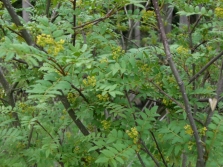
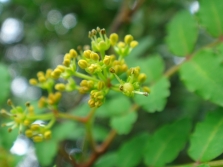

Where does it grow
The natural range extends in Japan from Hokkaido to Kyushu. Outside the country, shrubs are extremely rare.

spice making method
The leaves, flowers, fruits, and even the wood of the pepper tree are aromatic. Harvesting of spices is carried out almost all year round.
- In the spring, leaves and buds come into play, they are called ki-no-me. Greens are sold fresh or pickled.
- Dried leaves can be used as a separate seasoning.
- The flowers are also used as a spice and are harvested in early summer.
- In July, green (immature) berries are harvested, but only their shells are used for food.
- In autumn, the leaves and peel of ripe fruits are harvested. The pre-dried raw materials are ground into powder, which is called "sansho-no-ko". This mixture is sold in seasoning departments, in sealed bags, or jars. Suitable for soups and noodles, giving them a spicy taste and aroma.



Peculiarities
Despite the fact that the pepper tree is called pepper, in fact, this spice has only some of its specific features:
- moderately burning, slightly lemony taste;
- the leaves have a refreshing mint-lime flavor that helps balance the pungent smell and taste of fatty foods;
- a short heating of sansho in a dry dish reveals its smell more strongly - it is a soft and soothing aroma;
- if you put it on your tongue, you can feel a slight tingling sensation.
The pepper tree is part of the "seven spices" seasoning, consisting of hot red chili, orange peel, two types of sesame seeds, poppy seeds and nori (seaweed) powder.

Nutritional value and calories
In 100 grams of product:
| Squirrels | Fats | Carbohydrates | calories |
| 0.21 gr. | 0.12 gr. | 1.39 gr. | 8 kcal |
Chemical composition
The leaves contain monoterpine derivatives - citronellal, citronellol and inseparable compounds Z-3-hexenal, which causes a grassy smell.
The pepper tree contains amides, which give pungency. Their concentration increases when the spice is dried.

Beneficial features
The following useful and healing properties of sansho are distinguished:
- Japanese pharmacists have identified the medicinal properties of pepper tree roots, which have a stimulating effect on the digestive tract.
- Bitter anesthetic tinctures are prepared from the peel of ripe berries.
- Pepper tree increases appetite and generally has a beneficial effect on the body.
- Has antiseptic properties.

in weight loss
More recently, Japanese scientists have determined the fat-burning properties of the spice in question. The substances contained in it stimulate the brain and activate the internal organs. Therefore, it can be included in diets for weight loss and weight control.

Harm
The pepper tree has no special contraindications. An exception is individual intolerance. The dosage should also be observed, since in large quantities it irritates the stomach and can cause numbness in the mouth for 10 minutes.
Oil
From the fruits of the pepper tree, and specifically from their peel, essential oil is extracted, up to 4%. It has a spicy, fresh lemon aroma and a slightly burning taste, which is due to the content of terpenes.
EM has the following characteristics:
- tonic effect;
- increases energy;
- calms the nervous system.

Application
In cooking
- The pepper tree is used as a seasoning because of its pungent smell.
- Dried spices are ideal for meat, fish and seafood. It eliminates their strong odors, leaving all tastes.
- The spice is often added to grilled dishes. For example, yakitori, unagi kabayaki, etc.
- Young leaves are suitable for fish, soups, salads, or used as their decoration.
- Pepper buds are used in cooking to balance the taste and aroma of Japanese dishes. They are especially good with seafood and vegetable soups.
- Ripe sansho berries are used to make Niboshi dashi broth based on kombu seaweed and dry sardines or tuna.


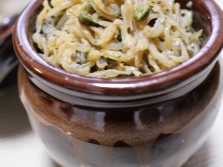
Delicious eel
It will take 400 gr.eel, which must be divided into 8 pieces and strung on two skewers. Boil the "constructions with eel" for a couple of minutes ten and fry over low heat (about six minutes, constantly turning over).
In a small bowl, prepare a mixture of sugar, soy sauce and vodka, each 3 tablespoons. Warm up the resulting mass for 4 minutes. Dip the eel in the prepared gravy and fry for another ten minutes until golden brown, drizzling with the rest of the mixture.
Remove the skewers and sprinkle the eel with one teaspoon of pepperwood. Serve with rice, vegetables, salads.

Green onion seasoning
Dip a bunch of finely chopped onions in a bowl of water for 10 minutes. Then drain the water, add a teaspoon of sansho pepper, a pinch of salt and one tablespoon of sesame oil. A small, tasty side dish is ready! Can be stored in the refrigerator for a long time. Used as an additive to main dishes, meat, fish, sauces and marinades.
Of course, you can adjust the amount of ingredients in the dish to your liking.

Varieties
Sansho Asakura (thornless pepper variety) is one of the widely cultivated varieties of sansho. It is grown more for commercial purposes. Harvesting begins around September-October, when the berries turn red and the seeds are exposed.
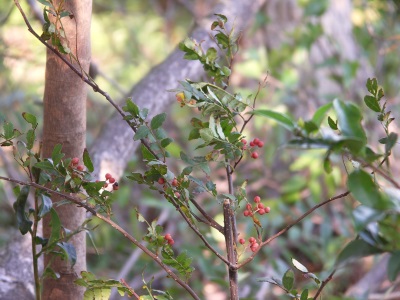
cultivation
The pepper tree is a versatile spice and many Japanese cultivate it in their gardens. True, it is quite difficult to grow it, and this is not surprising, because caring for a pepper tree takes a lot of time. This is a very sensitive plant and needs the right balance of sunlight, shade and moisture.
It would be better if you get it in the form of a young seedling.It is necessary to immediately determine the permanent place of growth of pepper, and after transplanting it once, do not touch it again. Care is required here, the slightest damage to the roots is very detrimental to the whole plant.
If you want your tree to bear fruit, you need to keep in mind that two plants are planted at the same time - female and male. There are also "unisex" varieties that do not require cross-pollination.

Care
Sansho prefers places with well-drained, slightly acidic soil. Constantly maintaining the moisture level will help to avoid diseases of the pepper, but stagnant water is also harmful to it.
The plant lives and bears fruit for 20 years. Properly grown sansho from seeds, gives the first berries in the second year. In the summer, you can harvest from green fruits, and in early September, ripe ones.
In autumn, and sometimes in summer, yellowing of the leaves is possible, but do not worry, this is just a natural process.
It is worth noting that aphids, butterflies and caterpillars are a danger to pepper. These insects can eat both leaves and berries.

At home
The pepper tree as a bonsai is becoming more and more popular. This is a beautiful house plant, with impeccably proportioned leaves.

At home, places near windows are chosen for growing, because the plant loves light. But the pepper tree does not tolerate direct sunlight.
The earth should be humus with good drainage. During the period of intensive growth, they begin to feed - in late spring and mid-autumn.

Care
- In summer, take out to fresh air in partial shade.
- Watering is moderate when the top layer of the earth dries. There should be no stagnant moisture.
- Feed during the period of its rapid growth from spring to autumn.
- You need to transplant a plant in the spring every 2 years, old ones - 3-4 years.At the same time, the roots are trimmed to a third of the length.
- In winter, shorten and remove branches to form the desired shape. They are treated with a special balm.
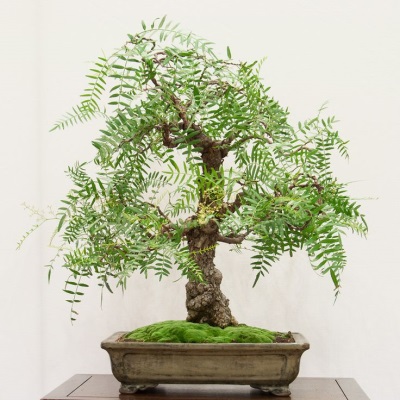
stem shaping
Winter is the best time to shorten and remove unwanted branches. You can use the wire to guide the branches in the right direction for six months. It should not be wound tightly so as not to damage the bark. But before that, it is advisable not to water the plant, then the branches will be more flexible.


















Cool! I liked the sansho in a pot for the house!